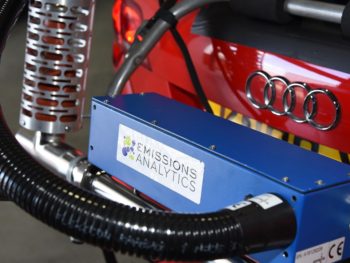WLTP unfairly advantaging petrol engines, study shows
The new WLTP test cycle is significantly underestimating the real-world fuel consumption and CO2 emissions of petrol vehicles, according to Emissions Analytics, potentially over-incentivising them against diesels based on non-existent improvements in real-world fuel economy.
Introduced in September 2017, the Worldwide harmonised Light Vehicles Test Procedure (WLTP) is a tougher fuel consumption test, which replaces the New European Drive Cycle (NEDC) used previously. Manufacturers are already publishing WLTP fuel consumption data, and CO2 emissions will follow suit next year, ahead of a restructured vehicle excise duty and company car tax regime launching in April 2020.
Emissions Analytics, which has carried out independent on-road economy and emissions tests since 2011, assembled comparable groups of NEDC and WLTP-tested petrol and diesel cars. It then compared average CO2 emissions to the on-road test figures published in its own EQUA Index, discovering very different results for the two fuels.
Under NEDC conditions, the diesel group averaged 124g/km, rising to 175g/km under WLTP. The latter tallies with the EQUA Index, which showed averages of 172g/km for the NEDC-tested vehicles, and 173g/km for those with WLTP figures, suggesting the tougher testing is producing more realistic data.
Petrol cars averaged 152g/km under NEDC, but their CO2 emissions reduced slightly to 151g/km under WLTP, despite the tougher test cycle including more high-load, high-speed driving. This means the gap between Emissions Analytics’ data and WLTP figures for petrol engines is actually wider than it was under NEDC conditions.
As an added complexity, manufacturers are working towards a 95g/km CO2 average for 2021, with significant financial penalties for those who miss their target. Because this measures ongoing improvements based on NEDC figures, all WLTP data is being computer-converted to ‘NEDC Correlated’ values for comparative purposes. In the UK, these converted CO2 figures are still published for new vehicles and will underpin vehicle excise duty and company car tax until the CO2 bands are reformed for WLTP next April.
However, NEDC Correlated figures are rarely the same as their ‘true’ NEDC counterparts, and this appears to be furthering the whole-life cost disadvantage for diesels. In addition to Euro 6 compliance costs and the recently-introduced four percentage-point company car tax penalty for diesel engines, their NEDC Correlated CO2 emissions were on average 19g/km higher than NEDC figures, averaging 143g/km.
Petrol CO2 emissions fell 18g/km, to a 133g/km average. With EQUA Index data showing slight rises in CO2 for both fuel types, the results suggest tax based on NEDC Correlated figures is incentivising petrol engines over diesels, based on non-existent improvements in fuel economy. Emissions Analytics also pointed out that the recent increase in market share for petrol vehicles meant they would make the biggest impact in reducing average CO2 emissions ahead of the 2021 target.
CEO Nick Molden said it highlights the need for independent testing: “This would make WLTP questionable as a source for gathering actionable data, much like NEDC that preceded it. It is also worth pointing out that the EQUA Index currently shows real-world emissions sitting well above the EU headline 130g/km fleet average target for CO2, which suggests official data flatters how much CO2 is being reduced overall.
“While obtaining laboratory figures should be a useful way accurately to benchmark vehicles, there is a severe lack of validation and correlation with real-world use. Granted, repeatability suffers when testing on the road, but it severely limits the ability of manufacturers to optimise for the test.”
CO2company car taxEmissions AnalyticsEQUA IndexFuel EconomyNEDCNEDC CorrelatedWLTP













